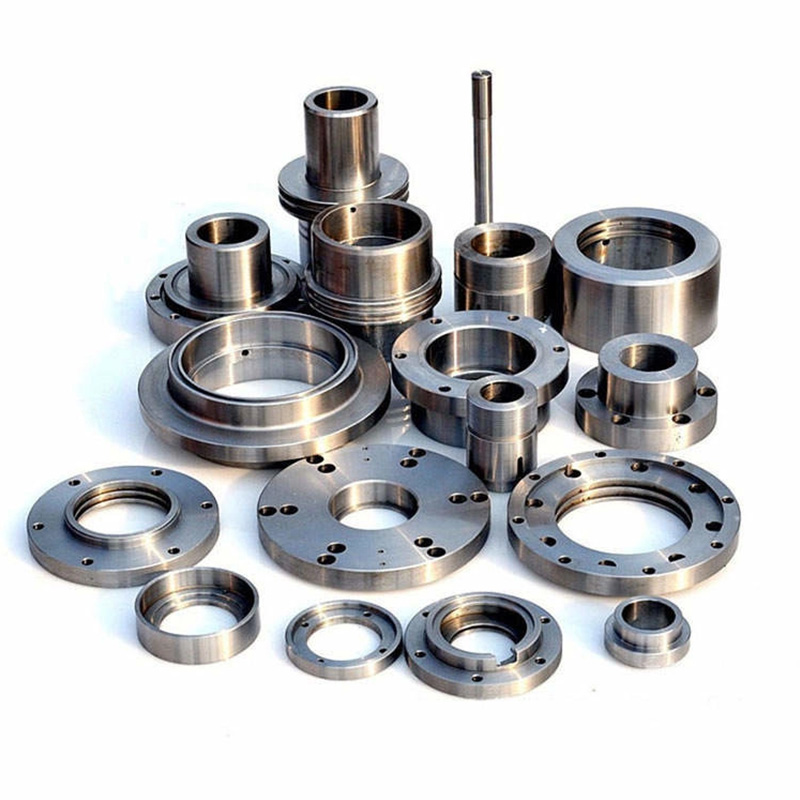Precision & Consistency: The Core Advantages
Ever had parts fail QC due to tiny variations? Manual lathes struggle with micron-level accuracy. Lathe CNC parts eliminate this through programmed precision. Think ±0.005mm tolerances routinely achieved.
Benefit 1: Microscopic Accuracy
CNC turning machines follow digital blueprints exactly. No human error. For example, our team machined 500 titanium spinal implants in 2025 – all matched specs perfectly. That’s reliability you can’t get manually.
Benefit 2: Batch Uniformity
Need 10,000 identical bushings? CNC automation ensures part 1 and part 10,000 are clones. Fun fact: A study by SME Journal (2023) showed CNC reduced dimensional errors by 92% vs manual lathes.
Cost & Efficiency Boosters
Waste and downtime eat profits. Lathe CNC parts optimize both. Let’s break it down:
Benefit 3: Faster Cycle Times
CNC lathes work 24/7 with rapid tool changes. Real data: According to Modern Machine Shop, CNC turning cuts production time by 50-70% compared to conventional methods.
Benefit 4: Lower Material Waste
Precise tool paths mean minimal scrap. You’ll save up to 30% on raw materials – especially crucial with pricey metals like Inconel.
Flexibility & Complexity Made Simple
Switching part designs shouldn’t mean days of recalibration. With CNC turning, it’s just a program upload.
Benefit 5: Multi-Axis Machining
Complex contours? No problem. Live tooling on modern CNC lathes mills slots or drills holes while spinning the part. One setup, complete geometry.
Benefit 6: Rapid Prototyping
Got a new gear design? Code it overnight, test samples by morning. Lathe CNC parts accelerate R&D cycles dramatically.
Traditional vs CNC Lathe Parts: Side-by-Side
| Factor | Traditional Lathe Parts | CNC Lathe Parts |
|---|---|---|
| Tolerance Accuracy | ±0.1mm | ±0.005mm |
| Setup Change Time | 2-4 hours | Under 15 mins |
| Material Waste | 15-20% | 3-8% |
| Complex Geometry | Limited | High (5+ axes) |
Note: CNC dominates for precision-critical applications like surgical tools or jet engine components.
How to Source Quality Lathe CNC Parts: 5 Steps
- Define specs: List dimensions, tolerances, material grade (e.g., 316L stainless)
- Choose supplier capabilities: Verify CNC machines have live tooling and sub-spindle options
- Request material certifications: Ensure traceability for aerospace/medical grades
- Order prototypes: Test fit, finish, and durability before full production
- Implement QC checks: Use CMMs (Coordinate Measuring Machines) for batch validation
Common CNC Turning Pitfalls to Avoid
WARNING: Choosing vendors based solely on price often backfires. Cheap CNC lathe parts may have:
- Untested materials causing premature failure
- Inconsistent heat treatment leading to stress fractures
- Poor surface finish accelerating wear
Pro tip: Always audit supplier quality systems – ISO 9001 certification is a green flag.
Lathe CNC Parts Implementation Checklist
- ☑️ Document all critical dimensions & tolerances
- ☑️ Confirm material certs match ASTM/ISO standards
- ☑️ Validate prototype performance under load
- ☑️ Establish SPC (Statistical Process Control) for production batches
- ☑️ Schedule preventive machine maintenance
FAQs About Lathe CNC Parts
Q: How long do CNC-turned parts last vs cast parts?
A: Properly machined lathe CNC parts typically outlast castings by 3-5x due to superior grain structure integrity.
Q: Can CNC lathes handle plastics or only metals?
A: Absolutely! CNC turning works with engineering plastics like PEEK or Delrin – common in medical devices.
Q: What’s the lead time for custom CNC-turned components?
A: Prototypes in 3-5 days; production batches in 2-3 weeks (varies by complexity).







